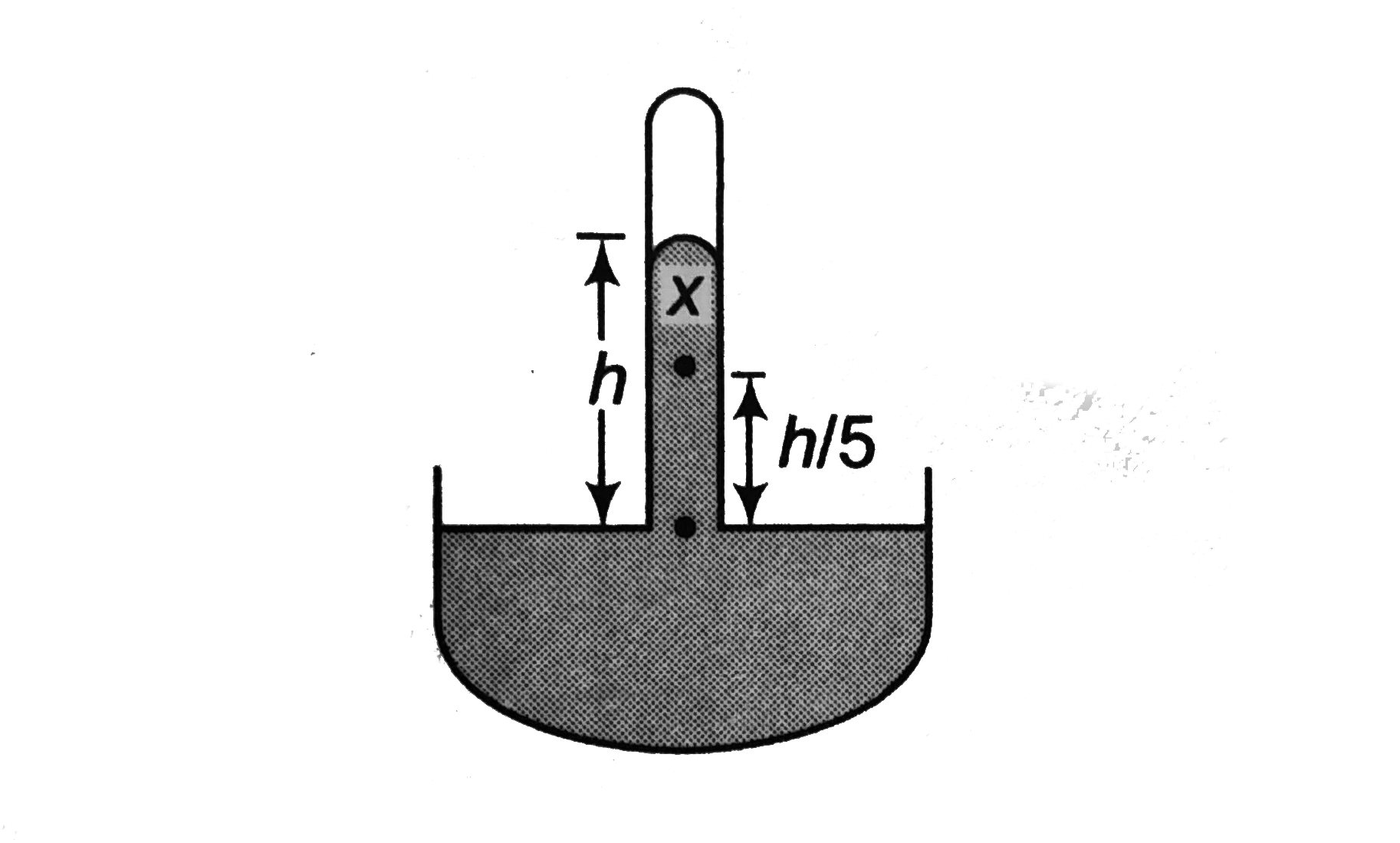Suppose the pressure at the surface of mercury in as barometer tube is P1 and the pressure at the surface of mercury in the cup is P2.
P1=0,P2= atgmospheric pressure
P1= atmosphereic pressure P2=0
P1=P2=atmospheric pressure
P1=P2=0
The correct Answer is:A
To solve the problem, we need to analyze the situation involving a barometer and the pressures at two different points: the surface of mercury in the barometer tube (P1) and the surface of mercury in the cup (P2).
1. Understanding the Barometer Setup:
- A barometer consists of a tube filled with mercury, which is inverted and placed in a dish (or cup) containing mercury. The height of the mercury column in the tube (H) is determined by the atmospheric pressure.
2. Pressure at the Surface of Mercury in the Barometer Tube (P1):
- At the top of the mercury column in the barometer tube, there is a vacuum. This means that there is no air pressure acting on the mercury at that point.
- Therefore, the pressure at the surface of mercury in the barometer tube (P1) is equal to 0.
P1=0(since it is a vacuum)
3. Pressure at the Surface of Mercury in the Cup (P2):
- The mercury in the cup is open to the atmosphere. Thus, the pressure at the surface of the mercury in the cup is equal to the atmospheric pressure (P_atmospheric).
- Therefore, the pressure at the surface of mercury in the cup (P2) is equal to the atmospheric pressure.
P2=Patmospheric
4. Conclusion:
- We have determined that:
- P1=0
- P2=Patmospheric
Final Answer:
- P1=0
- P2=Patmospheric
- A barometer consists of a tube filled with mercury, which is inverted and placed in a dish (or cup) containing mercury. The height of the mercury column in the tube (H) is determined by the atmospheric pressure.
- At the top of the mercury column in the barometer tube, there is a vacuum. This means that there is no air pressure acting on the mercury at that point.
- Therefore, the pressure at the surface of mercury in the barometer tube (P1) is equal to 0.
- The mercury in the cup is open to the atmosphere. Thus, the pressure at the surface of the mercury in the cup is equal to the atmospheric pressure (P_atmospheric).
- Therefore, the pressure at the surface of mercury in the cup (P2) is equal to the atmospheric pressure.
- We have determined that:
- P1=0
- P2=Patmospheric
- P1=0
- P2=Patmospheric
Topper's Solved these Questions
Similar Questions
The pressure given by a mercury barometer is always less than actual pressure. Why?
View SolutionA barometer is constructed with its tube having radius 1.0 mm. Assume that the surface of mercury in the tube is spherical in shape. If the atmospheric pressure is equal to 76 cm of mercury, what will be the height raised in the barometer tube? The contact angle of mercury with glass135∘ and surface tension of mercury =0.466Nm−1. Density of mercury=13600kgm−3.
View Solution
Knowledge Check
The atmospheric pressure at earth surface is P1 and inside a mine is P2. They are related as :
AP1=P2BP1>P2CP1<P2DP2=0
Why mercury is used in barometer for measuring atmospheric pressure?
View SolutionThe height of mercury barometer is h when the atmospheic pressure is 105Pa. The pressure at x in the shown diagram is

View SolutionHow will you show that there is vacuum above the surface of mercury in a barometer ? What name is given to this vacuum ?
View SolutionThe vertical height of mercury in a simple barometer is dependant on the area of cross-section of barometer tube.
View SolutionThe depression of mercury in a capillary tube of radius R1 is observed to be equal to the rise of water in another capillary tube of radius R2. If the ratio of surface tension of mercury and water is 7.5, ratio of their density pHgpwater=13.6 and their angle of contact are θHg=135∘ and θwater=0∘ in the respective tubes then R1/R2 is :
View SolutionExpress one atm pressure in terms of the height of mercury column.
View SolutionExplain why does the mercury level in a barometer go down when atmospheric pressure decreases?
View Solution
